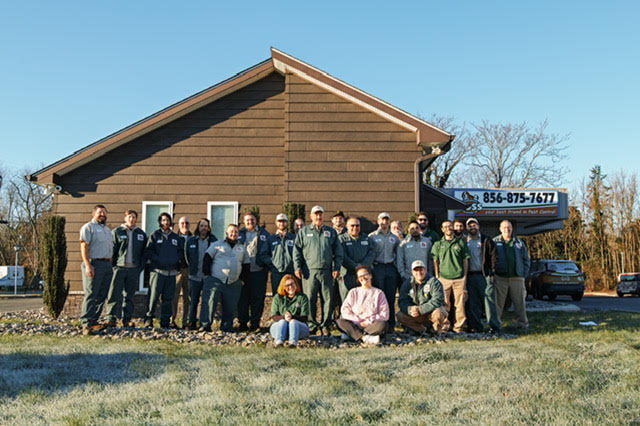What Causes Indian Meal Moths & Are They Harmful? Where Do Pantry Moths Come From & How to Get Rid of Them in Deptford, NJ!
Have you noticed little moths flitting about in your kitchen and pantry? If you have, the first thing you need to do is figure out where they’re coming from. You’ll need to do a thorough inspection of suspected areas with a flashlight and a magnifying glass. Look through all food items and the corners and crevices of the suspected areas. You should also pour all the food out of the packages and sift through them. Look for signs of living moths or larvae that are creamy white with a brown head and cocoons. Indian meal moths like to eat grain products, dried fruits, seeds, nuts, powdered milk, candy, bird seed and pet food.
Signs of an Indian Meal Moth Infestation
This most obvious sign of Indian meal moths is food that is clumpy. The clumps are formed when groups of larva are webbed together with a strand of silk. Webbing in the corners of packages with an unpleasant odor or sticky secretions that will make food clump together. The flying moths will fly in a zigzag pattern in the kitchen or the home and will most often be seen at night. They are also attracted to light. You might notice larva hanging from the ceiling. They will crawl up the wall and hang themselves from the ceiling with silken threads. Using your magnifying glass will make it easier to see this because they’re so small and hard to see from the ground. If you’re ever in doubt about a food being infested with meal moths, you should put any possible items in a heavy-duty Ziploc bag for at least a month. If you notice pantry pests accumulating inside the bag you can just throw it away.
How to Get Rid of Pantry Pests
There are three different ways to control Indian meal moths and other pantry pests and using all three methods at once is the best way to completely eliminate a pantry moth infestation.
1. Nonchemical control. While pesticides are very effective, you shouldn’t rely on them for total elimination. Effort needs to be made on your part. Good sanitation and removing conditions that attract them will make the chemical part of the solution work faster and prevent any future problems. Store bulk, dry food and anything that comes in a paper or cardboard box like flour or cereal or in tight-fitting containers. Clean pantry shelves on a regular basis to remove bits of food. Don’t buy packages of food that are damaged and don’t mix old and new foods together. You might just infest new food if the old ones were infested. Clean old containers with soap and water before putting new food in them and keep storage units dry because moisture is attractive to meal moths.
2. Moth traps. You can purchase traps to control these pests. They’re made of cardboard and contain pheromones that will attract them. Place them anywhere there’s moth activity. These traps will work for about 4 to 6 weeks.
3. Chemical control. Apply a spray to seal off any cracks and crevices after you’ve cleaned everything. This will prevent future infestations. Find all the voids that they might be using as a living space and repeat as necessary. This product might leave a white residue behind that can be cleaned with a damp sponge or cloth.
Professional Indian Meal Moth & Pantry Pest Control
It’s a good idea to use a pest control company to eliminate a pantry moth infestation. Using pesticides in your kitchen should be done by professionals for the safety of your family. Contact Ross Environmental Solutions, Inc. to get rid of pantry moths and other pests today!



